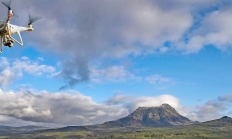First Chinook fishery since 2021 proposed for Coquille River thanks to success of Coquille Tribe-ODFW partnership, volunteer efforts
ODFW Director Debbie Colbert (at podium) and Coquille Tribe Chairwoman Brenda Meade (to the right in black jacket) on July 31, 2025 in Bandon, Ore. to announce a major step forward in their combined management effort on salmon recovery in the Coquille River. The first fall Chinook fishery since 2021…






